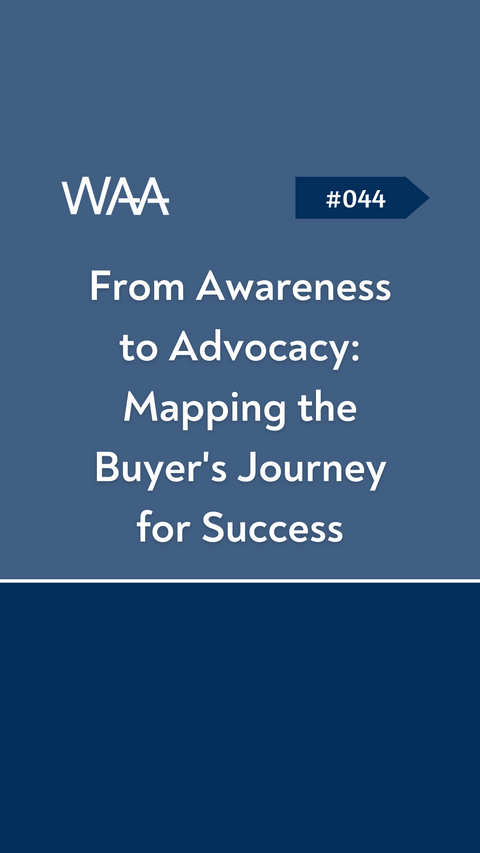
#044 From Awareness to Advocacy: Mapping the Buyer's Journey for Success
Introduction:
In today's market, where consumers have more choices than ever, businesses must go beyond traditional marketing tactics to connect with their target audience. Understanding the buyer's journey is crucial for effectively engaging potential customers and guiding them from awareness to advocacy. By utilizing strategic marketing techniques, building a strong brand, and incorporating storytelling, businesses can map out the buyer's journey and optimize their marketing efforts at every stage. In this blog post, we will explore the key stages of the buyer's journey, strategies for each stage, and the role of branding and storytelling in creating a successful journey.
The Buyer's Joureney Stages:
-
Awareness:
- This is the initial stage, in which the potential customer becomes aware of a problem or need.
- Strategies: SEO optimization, content marketing, social media advertising, and influencer collaborations can help raise awareness and reach a wider audience.
- Storytelling: Use stories that highlight the problem or need and introduce your brand as a solution. Engage with the audience through compelling narratives.
-
Consideration:
- At this stage, the customer is actively researching and evaluating different options to address their problem or need.
- Strategies: Provide informative content, case studies, reviews, and demos to showcase the value and benefits of your products or services. Use targeted email campaigns to nurture leads.
- Storytelling: Share success stories and testimonials of satisfied customers who have benefited from your offerings. Emphasize how your brand can provide a unique solution or experience.
-
Decision:
- The customer is ready to make a purchase and is deciding which brand to choose.
- Strategies: Offer incentives, discounts, or limited-time promotions to encourage conversion. Provide a seamless and user-friendly buying experience, with clear calls to action.
- Storytelling: Use storytelling to make your brand relatable and trustworthy. Highlight your brand's values, mission, and commitment to customer satisfaction.
-
Advocacy:
- After a successful purchase, the customer becomes a brand advocate, sharing positive experiences and recommending your brand to others.
- Strategies: Encourage satisfied customers to leave reviews, testimonials, or user-generated content. Offer referral programs or loyalty rewards.
- Storytelling: Leverage user-generated content and testimonials to showcase real-life experiences and the positive impact your brand has made on customers.
The Role of Branding and Storytelling:
-
Branding:
- A strong and consistent brand identity helps build trust and recognition, making the buyer's journey more seamless and memorable.
- Ensure your branding aligns with your target audience's values, aspirations, and preferences.
- Use consistent messaging, visuals, and brand voice across all touchpoints to reinforce your brand identity and create a cohesive experience.
-
Storytelling:
- Emotional storytelling creates a connection with customers, making your brand more relatable and memorable.
- Incorporate stories throughout the buyer's journey to engage and captivate potential customers.
- Show how your brand has made a difference and connect with your audience's emotions and experiences.
Conclusion:
Mapping the buyer's journey is essential for businesses to effectively engage and guide potential customers from awareness to advocacy. By understanding the different stages and utilizing targeted strategies, businesses can optimize their marketing efforts and build meaningful relationships with their audience. Branding plays a crucial role in establishing trust and recognition, while storytelling adds emotional depth and relatability to your brand's narrative. By combining strategic marketing techniques, a strong brand identity, and compelling storytelling, businesses can successfully navigate the buyer's journey and turn customers into loyal brand advocates.
